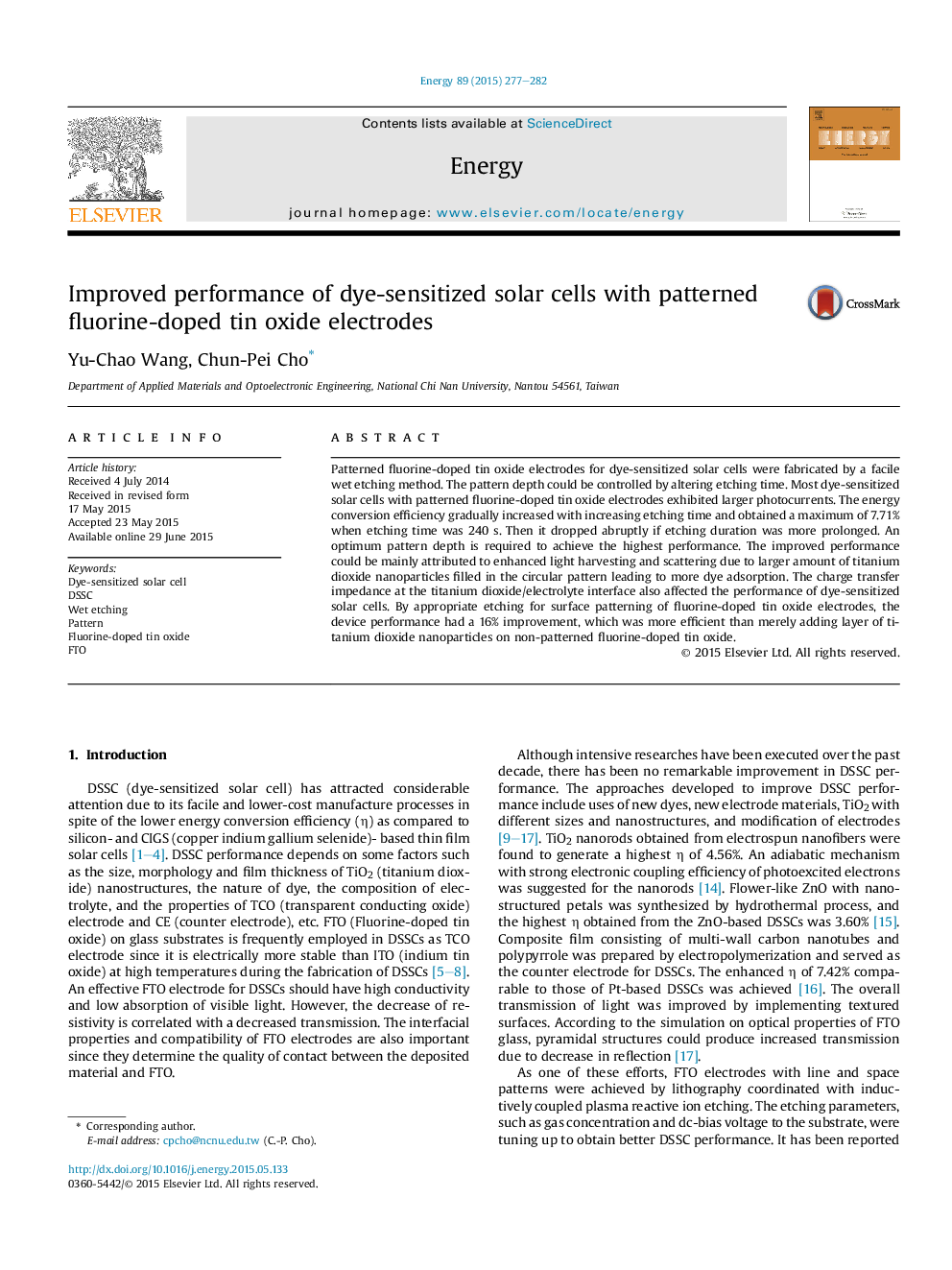| Article ID | Journal | Published Year | Pages | File Type |
|---|---|---|---|---|
| 1731905 | Energy | 2015 | 6 Pages |
•Patterned FTO electrodes were fabricated by a facile wet etching method.•DSSC performance showed a 16% improvement as FTO had an optimum pattern depth.•Patterned FTO lead to higher η than merely adding TiO2 layer of nanoparticles.•Enhanced light harvesting resulted from more filling of nanoparticles in pattern.•Larger charge transfer impedance was caused as FTO was almost thoroughly etched away.
Patterned fluorine-doped tin oxide electrodes for dye-sensitized solar cells were fabricated by a facile wet etching method. The pattern depth could be controlled by altering etching time. Most dye-sensitized solar cells with patterned fluorine-doped tin oxide electrodes exhibited larger photocurrents. The energy conversion efficiency gradually increased with increasing etching time and obtained a maximum of 7.71% when etching time was 240 s. Then it dropped abruptly if etching duration was more prolonged. An optimum pattern depth is required to achieve the highest performance. The improved performance could be mainly attributed to enhanced light harvesting and scattering due to larger amount of titanium dioxide nanoparticles filled in the circular pattern leading to more dye adsorption. The charge transfer impedance at the titanium dioxide/electrolyte interface also affected the performance of dye-sensitized solar cells. By appropriate etching for surface patterning of fluorine-doped tin oxide electrodes, the device performance had a 16% improvement, which was more efficient than merely adding layer of titanium dioxide nanoparticles on non-patterned fluorine-doped tin oxide.
